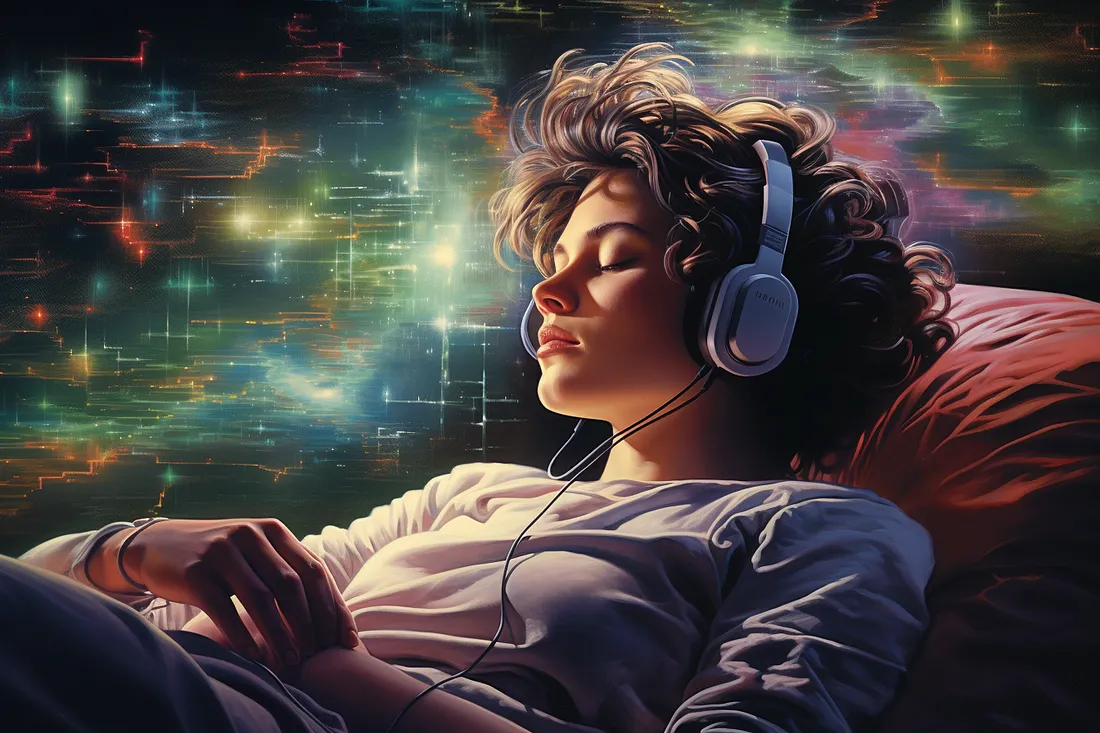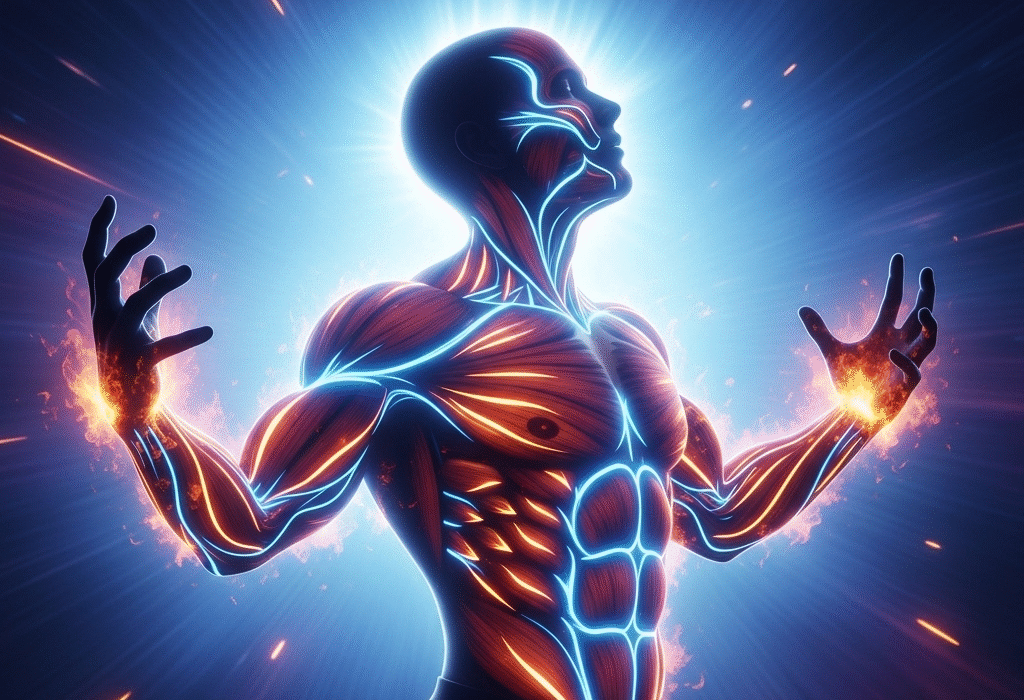For as long as humans have closed their eyes to drift into sleep, we have been haunted and fascinated by the landscapes of our dreams. Dreams can feel more vivid than waking life, transporting us to impossible worlds, resurrecting long-lost faces, or plunging us into scenes of terror and joy. They shape memory, emotion, and imagination, often leaving us with more questions than answers. What is the mind doing when the body lies motionless? Why do dreams carry such powerful symbolism? And most tantalizing of all: could we one day control them?
Modern science has begun to probe these ancient mysteries, peering into the architecture of sleep and uncovering the biological rhythms that govern our nightly visions. But in recent years, a new frontier has opened: the possibility of using technology to influence, manipulate, and perhaps even direct the dream world. From wearable devices that nudge the brain into lucidity to sophisticated neural imaging that maps the inner theater of sleep, the idea that humans might steer their dreams is no longer confined to mythology. It is an emerging possibility at the intersection of neuroscience, psychology, and technology.
The implications are profound. Controlled dreaming might allow us to rehearse skills, heal from trauma, spark creativity, or confront deep fears. Yet with such power come ethical dilemmas and unsettling questions. If technology grants us dominion over our dreams, what becomes of the unconscious self—the part of us that dreams freely and without constraint? To explore this question, we must first understand the nature of dreams themselves.
The Science of Dreaming
Dreams occur primarily during REM (rapid eye movement) sleep, a stage characterized by vivid brain activity, heightened emotional processing, and temporary paralysis of voluntary muscles. In this paradoxical state, the brain is nearly as active as when awake, but its focus shifts inward. The prefrontal cortex—the region responsible for logic and critical thinking—goes partially offline, while the limbic system, which governs emotion and memory, becomes highly active. This neural cocktail creates the bizarre yet emotionally charged scenarios of dreaming.
Electroencephalography (EEG) studies show that the brain cycles through stages of non-REM and REM sleep multiple times per night, with REM periods lengthening toward morning. In these stages, the brain processes memories, consolidates learning, and engages in what some researchers call “offline cognition.” This explains why dreams often incorporate fragments of daily experiences, reshuffled and dramatized by the unconscious.
Yet dreams are not mere byproducts of sleep. They influence waking life in profound ways. Nightmares can leave lingering anxiety, while a creative dream can inspire art, inventions, or scientific insights. Mary Shelley’s Frankenstein, Paul McCartney’s “Yesterday,” and even some of Einstein’s thought experiments have been linked to dream revelations. The dream state is not an idle theater but an essential mode of human cognition.
Understanding this makes the idea of controlling dreams even more powerful. If dreams already shape our waking thoughts, then learning to direct them could allow us to harness one of the most mysterious aspects of the mind.
The Lucid Dreaming Phenomenon
Long before technology entered the picture, humans discovered that it was sometimes possible to awaken within a dream. This state, known as lucid dreaming, occurs when a dreamer becomes aware they are dreaming while still immersed in the dream itself. In this rare condition, the dreamer can often influence events, alter the dream environment, or even take flight across imagined skies.
Lucid dreaming has been documented for centuries, from Tibetan Buddhist practices of dream yoga to the writings of Aristotle. Modern science confirmed its existence in the late twentieth century, when researchers developed ingenious methods for dreamers to signal their lucidity from within sleep. Using pre-arranged eye movements detectable by EEG, lucid dreamers proved they could consciously control their dreams.
Lucidity is not guaranteed, and many dreamers struggle to achieve it. Techniques such as reality testing, dream journaling, and mnemonic induction increase the odds, but success requires patience and training. For this reason, researchers and technologists have long asked: can devices help? Could machines give us the keys to lucidity on demand?
Technology Meets the Dream World
The dream frontier has become a playground for innovators seeking to merge neuroscience and engineering. Wearable devices have emerged that track sleep cycles and deliver targeted stimuli at precise moments, attempting to trigger lucidity without waking the sleeper.
One common approach is auditory or sensory cueing. By monitoring brain activity and detecting when a sleeper enters REM, devices can play subtle sounds, vibrations, or light flashes. These cues are designed to appear inside the dream as anomalies, prompting the dreamer to realize they are dreaming. For instance, a gentle flashing light may manifest as a traffic signal or flickering lamp within the dream. With practice, the dreamer recognizes the cue and gains awareness.
Other experiments use transcranial stimulation, applying mild electrical currents to regions of the brain associated with self-awareness. Some studies suggest that stimulating the frontal cortex during REM increases the likelihood of lucid dreaming. Although still in early stages, these methods raise the possibility of a future in which controlled dreaming could be achieved with a simple headset.
The most ambitious projects aim not just to induce lucidity but to shape dream content. By presenting sensory inputs—such as sounds, words, or even odors—during sleep, researchers have shown that specific themes can be woven into dreams. For example, playing the sound of waves might lead to ocean imagery, while a spoken phrase could steer the storyline. Such “targeted dream incubation” suggests that dreams are malleable, and with the right tools, they might be programmed.
Dreams as Laboratories of the Mind
If technology allows us to control dreams, the potential applications are extraordinary. One domain is therapy. Nightmares, especially those linked to trauma, can devastate mental health. Soldiers with post-traumatic stress disorder often relive harrowing scenes in their sleep, preventing rest and deepening their suffering. Controlled dreaming could allow such individuals to confront and reshape their nightmares, transforming them from terrifying scripts into empowering narratives.
Similarly, controlled dreaming could aid in overcoming phobias. A person afraid of heights could practice standing atop skyscrapers in their dreams, safe in the knowledge that no real harm could come. Athletes and performers might use lucid dreams to rehearse complex movements or presentations, strengthening neural pathways as if they had practiced in waking life.
The dream world could also become a boundless canvas for creativity. Writers, artists, and scientists could enter dream states to explore novel ideas unbound by physical laws. Unlike waking imagination, dreams provide fully immersive experiences where abstract concepts become tangible. A composer might hear entire symphonies, while an architect could walk through buildings not yet constructed.
Controlled dreams might even serve as emotional laboratories. By re-experiencing and reframing past memories, individuals could heal unresolved conflicts or explore alternate life choices. The unconscious could become not a mysterious wilderness but a navigable space for self-discovery.
The Ethical Frontiers of Dream Control
Yet with such possibilities come profound ethical dilemmas. Dreams have always been a private sanctuary, inaccessible to others. If technology can shape or even monitor them, that sanctuary risks intrusion. Who would control the devices? Could corporations attempt to implant advertising into dreams, as some marketing experiments have already hinted? Might governments seek to use dream manipulation for psychological conditioning?
Even in personal use, dream control raises questions about identity. Dreams reveal unconscious desires, fears, and conflicts. By reshaping them, do we lose touch with genuine aspects of ourselves? The unconscious is not merely an obstacle to be overridden; it is part of who we are. Interfering too heavily could blur the line between authentic emotion and engineered experience.
There is also the danger of overreliance. If controlled dreams become a refuge more appealing than waking life, individuals might withdraw into their dream worlds, preferring fantasy to reality. Much as virtual reality raises concerns about escapism, dream technology could tempt us to choose the perfect dream over the imperfect real.
Furthermore, the science remains incomplete. The brain is not a machine that can be programmed with precision. Dreams are unpredictable, and interventions may have unintended consequences. Stimulating certain neural circuits could disrupt natural sleep cycles, leading to cognitive or emotional harm. As with any powerful technology, caution must guide enthusiasm.
The Future of Dream Engineering
Despite these challenges, research continues to advance. Brain imaging has begun to reconstruct dream imagery by decoding neural patterns, hinting at a future where dreams could be recorded or even shared. Wearables grow more sophisticated, integrating biometric data to refine their timing. Artificial intelligence may one day analyze dream reports and generate personalized cues to shape future dreamscapes.
The vision of full dream control remains distant. At present, the best we can do is nudge dreams in certain directions or increase the chances of lucidity. But as our understanding of neural dynamics deepens, the possibility of more precise influence becomes less fantastical. A century ago, the idea of manipulating dreams with technology would have sounded like science fiction. Today, it is an experimental science. Tomorrow, it may be commonplace.
Dreams, Freedom, and the Human Spirit
Perhaps the most important question is not whether we can control our dreams but whether we should. Dreams have always been the realm where the unconscious roams freely, where logic yields to imagination, and where we encounter truths we cannot reach while awake. They remind us that part of being human is to be surprised by ourselves, to glimpse the hidden currents of the mind.
Technology may allow us to steer these currents, but complete control may rob us of the very essence of dreaming. Like a wild landscape tamed into a garden, the dream world could lose its raw vitality if overmanaged. The challenge, then, is to find balance: to use technology not to dominate dreams but to collaborate with them, guiding gently without extinguishing their mystery.
Dreams are not merely illusions of the night; they are reflections of the human spirit. They reveal our fears, our longings, and our capacity for wonder. To control them is to touch the deepest parts of ourselves. Whether we choose to do so with reverence or with reckless ambition will determine the future of dreaming itself.
Conclusion: The Uncharted Map of the Night
The possibility of controlling dreams with technology sits at the threshold of science and philosophy, promise and peril. It represents humanity’s enduring desire to master the unknown, to bend nature—whether outer space or inner consciousness—to our will. Yet it also reminds us that some frontiers are not meant to be conquered but explored with humility.
In the centuries to come, dream engineering may become a new art form, a new therapy, a new playground for creativity. But even if we never achieve full control, the very effort teaches us something profound: that the mind is far more vast and malleable than we once imagined. Dreams are not accidents of sleep; they are part of what makes us human, connecting our waking lives to the hidden depths of the unconscious.
To control our dreams is to enter into dialogue with that hidden self. It is not merely about technology but about understanding who we are when the lights of consciousness flicker out. The future of dreams may bring astonishing possibilities, but it will also challenge us to decide how much of our inner world we wish to command—and how much we wish to leave wild.






